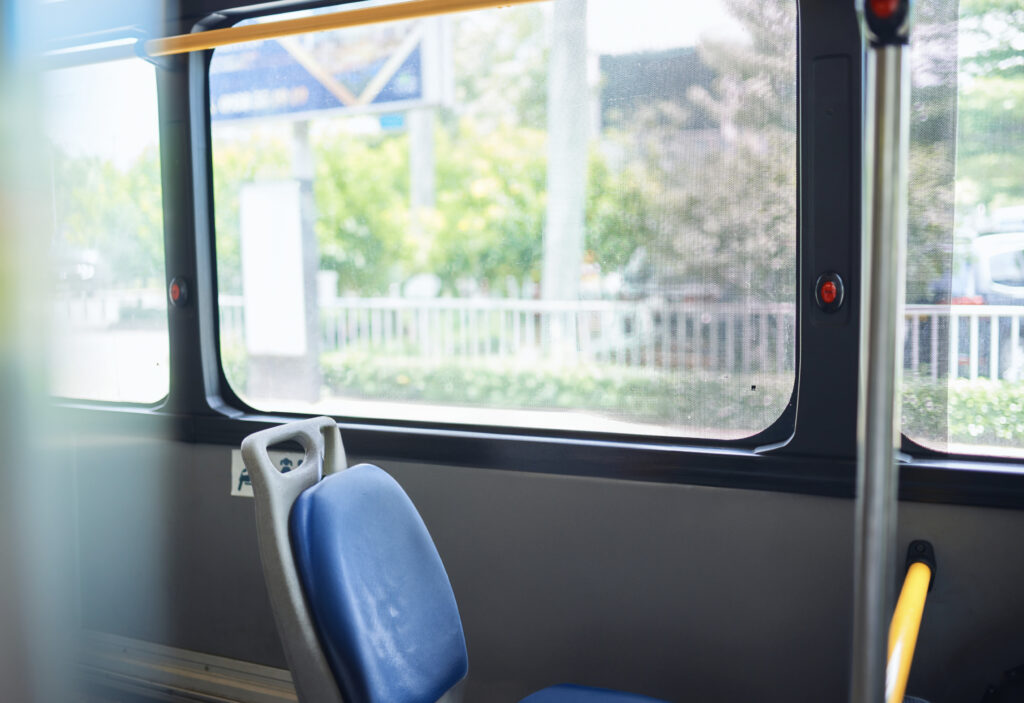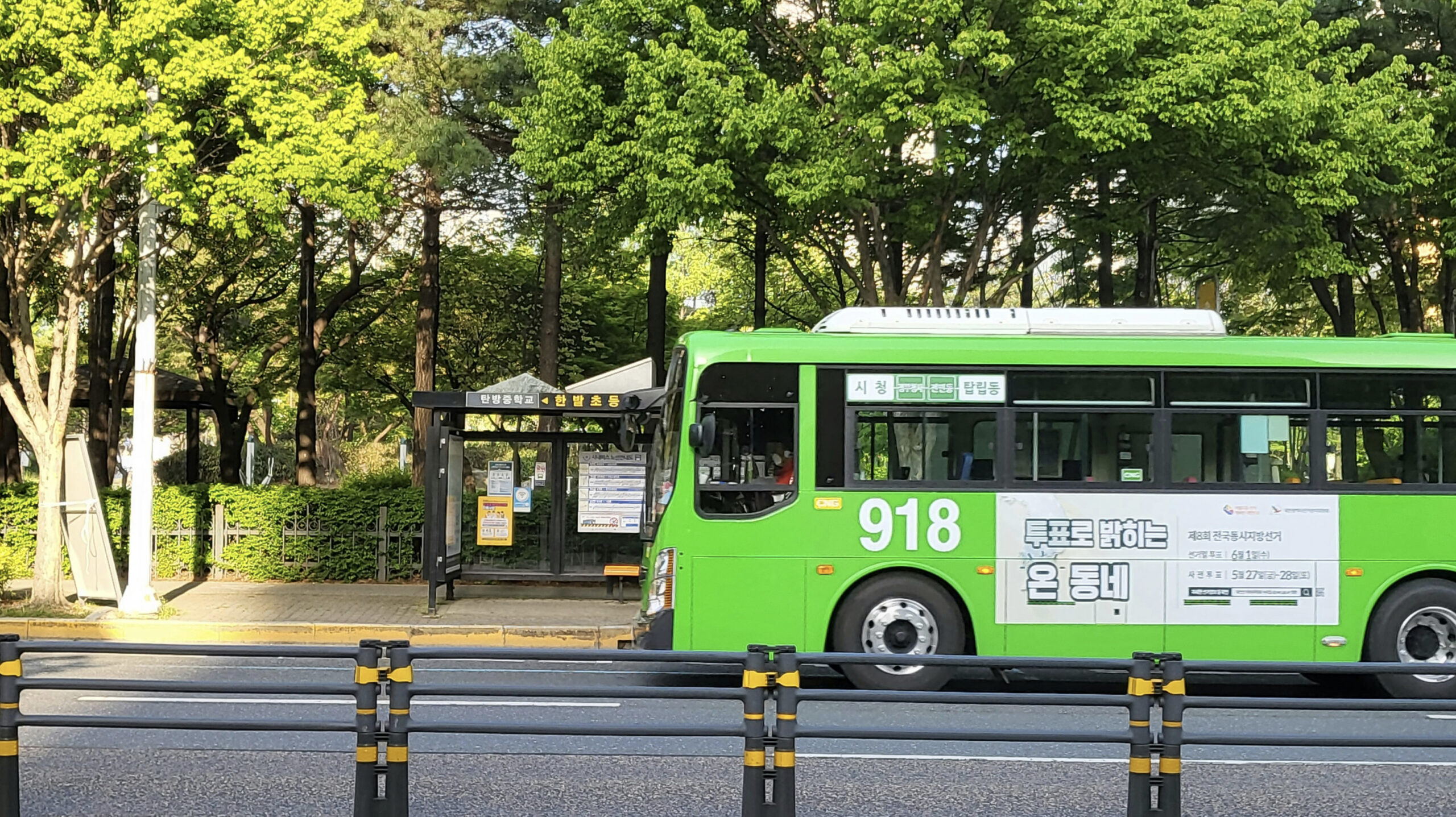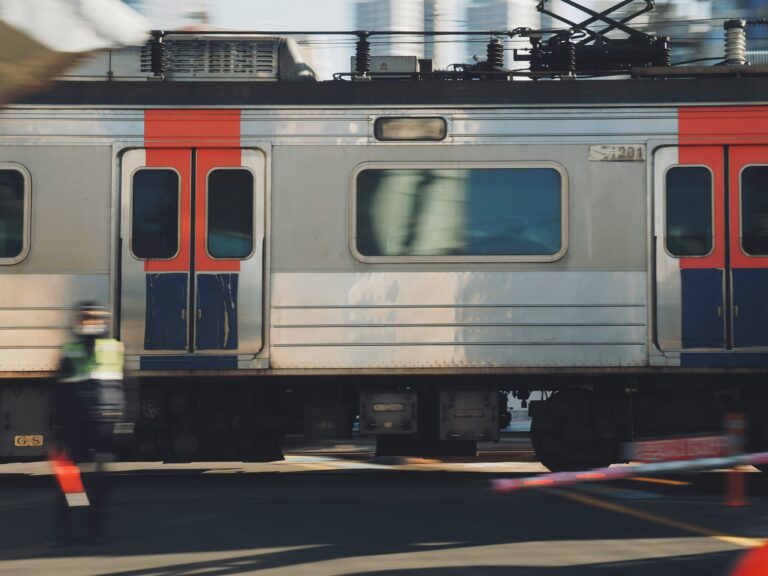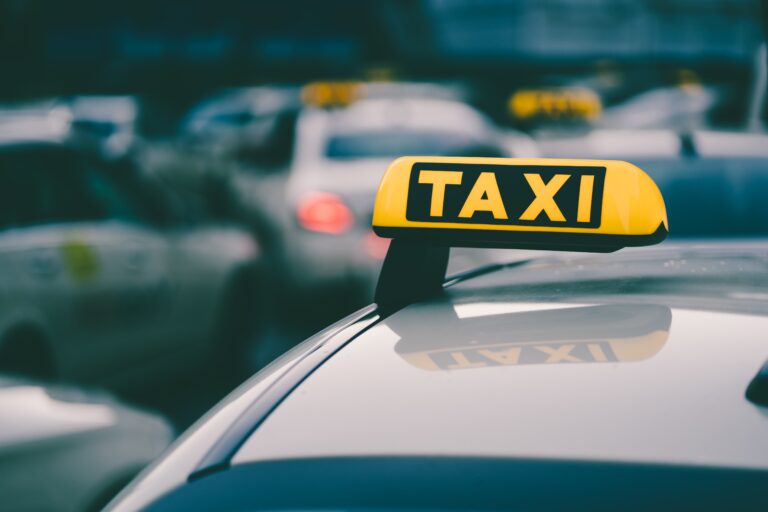Essential Korean Phrases for Taking the Bus in Korea

If you’re planning to ride public transportation in Korea, learning a few essential Korean bus phrases will help you travel confidently and avoid confusion.
Whether you’re in Korea for business or just exploring, chances are you’ll end up riding a city bus at some point.
Korean bus phrases are especially useful when navigating unfamiliar stops, asking to get off, or figuring out your route.
That’s why we put together this handy guide—so you can ride with more comfort, confidence, and independence.
Essential Korean Bus Phrases for Your Trip
Taking a taxi in Korea is easier than you might expect. Most rides are quick, clean, and afKorea’s bus system is fast, clean, and impressively punctual.
Once you understand how it works, it’s actually pretty easy to use.
That said, language is still one of the biggest barriers, especially for first-time travelers trying to board, transfer, or communicate with the driver.
Below are 6 practical Korean phrases that will help you get around with ease.
Each one includes Hangul (Korean script), romanized pronunciation, and an English translation—so even beginners can follow along without stress.
Each phrase includes:
- Hangul (Korean script)
- Romanized pronunciation
- English translation

1. When you’re trying to find the bus stop
- 버스 정류장이 어디에요?
- Beo-seu jeong-ryu-jang-i eo-di-e-yo?
- Where is the bus stop?
Wandering through a new neighborhood and not seeing any signs? This phrase is your go-to.
Many Korean bus stops have the same name on both sides of the street—but they go in opposite directions, so getting to the right one matters.
Some stops are also hidden behind buildings or don’t have clear signage.
When in doubt, just ask someone nearby—locals are usually happy to help.
2. When you need to check if the bus goes to your destination
Even if you’ve checked the route on an app, it’s always smart to double-check with the driver or another passenger.
Just say the destination followed by “가요?” (ga-yo?) to form a natural question.
“홍대입구 가요?”
“인천공항 가요?”
Say it with a light tone and a smile—it’ll come across as polite and friendly.
3. When you need to get off right away
Maybe you suddenly spot your hotel or a must-try café—this phrase lets you request an immediate stop.
⚠️ Keep in mind: Buses in Korea only stop at designated stops, so this should be used sparingly.
If you miss your stop or forget to press the bell, use this phrase with “죄송하지만” (sorry but…) to stay respectful.
4. When you’re getting off at the next stop
- 다음 정류장에서 내려 주세요.
- Da-eum jeong-ryu-jang-e-seo nae-ryeo ju-se-yo.
- Please let me off at the next stop.
Didn’t find the stop bell or unsure if the driver heard it?
Just say this aloud. It lets the driver know you’re preparing to get off, and they’ll keep an eye out—even if the bell wasn’t pressed.
It’s polite, clear, and especially useful on crowded buses.
5. When you want to pay in cash
- 현금도 돼요?
- Hyeon-geum-do dwae-yo?
- Can I pay in cash?
Most Korean buses accept T-money cards, credit/debit cards, and even mobile pay (like Apple Pay or Samsung Pay).
Still, if you’re short on options or your card isn’t working, it’s worth asking if cash is accepted.
Just keep in mind: drivers may not carry change, so bring small bills or coins.
6. When you need to recharge your transit card
- 교통카드 충전 어디서 해요?
- Gyo-tong-ka-deu chung-jeon eo-di-seo hae-yo?
- Where can I recharge my transportation card?
Low on balance? You can recharge your transit card at most convenience stores (like CU or GS25), subway stations, or even machines at some bus terminals.
If you’re not sure where to go, just ask a local using this phrase—they’ll likely point you in the right direction or even walk you there.
Quick Reference: Essential Korean Phrases for Taking the Bus
| Hangul (Korean script) | Romanized pronunciation | English translation |
| 버스 정류장이 어디에요? | Beo-seu jeong-ryu-jang-i eo-di-e-yo? | Where is the bus stop? |
| 강남역 가요? | Gang-nam-yeok ga-yo? | Does this bus go to Gangnam Station? |
| 죄송하지만, 여기에서 내려 주세요. | Jwe-song-ha-ji-man, yeo-gi-e-seo nae-ryeo ju-se-yo. | Sorry, but please let me off here. |
| 다음 정류장에서 내려 주세요. | Da-eum jeong-ryu-jang-e-seo nae-ryeo ju-se-yo. | Please let me off at the next stop. |
| 현금도 돼요? | Hyeon-geum-do dwae-yo? | Can I pay in cash? |
Final Thoughts: Now You Can Ride the Korean Bus with Confidence!
Korea’s bus system is one of the most convenient and affordable ways to travel around the country.
With accurate schedules, a vast network of routes, and support for contactless payments—including credit cards and mobile pay (like Apple Pay or Samsung Pay)—taking the bus in Korea is easier than ever.
That said, language barriers can still catch you off guard.
If you’re not confident in Korean, you might find it confusing to:
- locate the right bus stop
- confirm your destination
- request to get off
- or ask about payment options
That’s exactly why we put together this phrase guide—to help you handle real-life bus situations with ease.
These short, practical Korean phrases are designed so you can actually use them on the spot when talking to drivers or other passengers.
Extra Tip:
Before hopping on, use KakaoMap or Naver Map to check bus routes, real-time arrivals, and total trip time.
(Google Maps doesn’t work reliably in Korea, so it’s best to avoid it.)
Who Is This Guide For?
- First-time travelers in Korea
- Business travelers navigating the city
- Tourists visiting local neighborhoods or rural areas
- Visitors traveling without a Korean transportation card
Riding public buses isn’t just about getting from A to B—it’s part of the real Korean experience.
By learning these essential phrases, you’ll travel more confidently, connect better with locals, and enjoy the journey just as much as the destination.
Want to feel more confident getting around Korea?
Check out these helpful phrase guides:
Essential Korean Phrases for Using the Korean Subway
Must-Know Korean Phrases for Taking a Taxi
Images licensed from Freepik Premium and used from Unsplash. All rights reserved.






